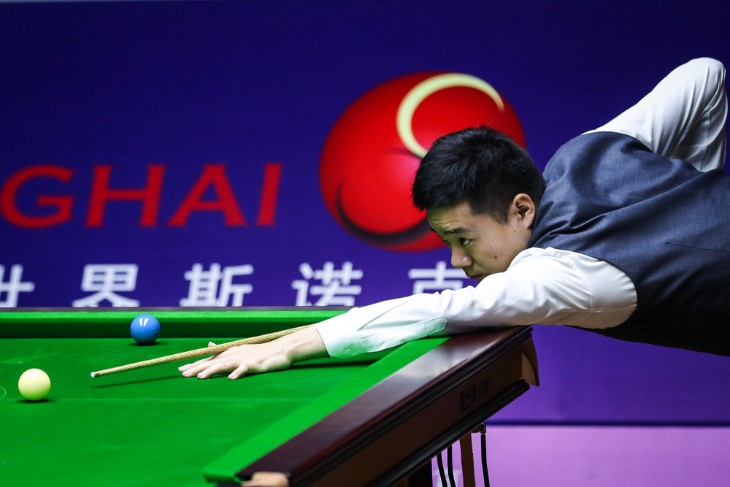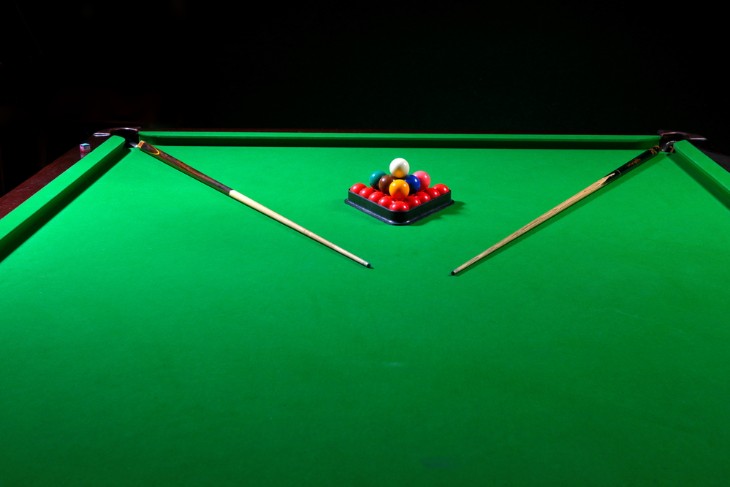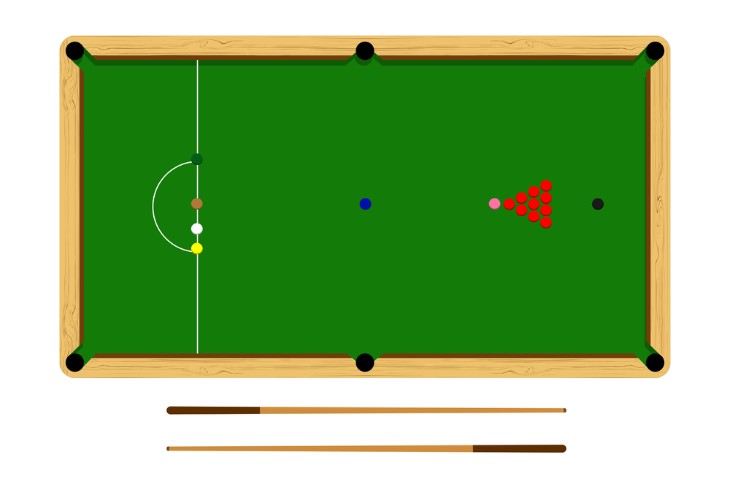The green color of snooker tables is a key and iconic feature in this precise and strategic sport. The reasons for this specific shade of green are deeply rooted in history, practicality, and cultural relevance, contributing significantly to the game's identity.
Historical Context
A. Origins and Evolution of Snooker
Snooker originated in the latter half of the 19th century, believed to have been invented by British army officers stationed in India. It was initially a variation of billiards, played on a rectangular table with pockets and different coloured balls. Over time, snooker evolved from a leisure activity among the British elite to a widely recognized and competitive sport, gaining popularity across various regions globally.
B. Historical Significance of Green Tables
Early iterations of snooker tables featured a variety of colours, but green became the predominant choice due to several reasons. One plausible explanation is the attempt to mimic the look of natural grass, reflecting the traditional outdoor lawn game origins of billiards. Green felt or baize, the cloth used to cover the playing surface, provided a visually appealing and soothing background against which the colourful balls could be easily distinguished.
C. Cultural and Traditional Aspects
The choice of green tables in snooker became deeply entrenched in the culture and tradition of the game. Over time, it acquired symbolic significance, representing the heritage and legacy of snooker as a sport. The colour green also holds various cultural associations, such as representing growth, harmony, and balance, which might have subconsciously influenced players' mindsets and attitudes during gameplay.
Moreover, the association of green with nature and its calming effects possibly contributed to creating an environment conducive to concentration and focus, crucial elements in a game that demands precision and strategic thinking.
The cultural and traditional aspects linked to the green colour further solidified its role as an integral component of the snooker experience, both for players and enthusiasts.
So, Why Are Snooker Tables Green?
There are some practical and functional reasons:
1. Contrast and Visibility
Ball Visibility: The selection of green isn't coincidental; it creates a stark contrast against the colourful snooker balls, enhancing their visibility. This contrast allows players to easily discern between different ball colours, aiding in shot selection and gameplay strategy.
2. Eye Comfort and Focus
Reduced Eye Strain: Green, particularly shades closer to the natural colour of grass, tends to be easier on the eyes, reducing eye strain during prolonged gameplay. This aspect is crucial in a game like snooker, where intense focus and concentration for extended periods are necessary.
3. Psychological Impact
Calming Effect: Green is often associated with relaxation and calmness. This psychological aspect might contribute to creating a conducive environment for players, promoting a sense of ease and focus, which is vital in a precision-based game like Snooker.

4. Tradition and Standardization
Historical Precedent: Over time, the green colour has become a tradition in snooker, standardized across tournaments and championships. Players are accustomed to playing on green tables, and any deviation might disrupt their comfort and familiarity with the playing surface.
5. TV Broadcasting and Spectator Experience
Enhanced Viewing Experience: The green playing surface is visually appealing and conducive to television broadcasting. It provides a distinct and vibrant backdrop, enhancing the spectator experience both in-person and on television.
6. Maintenance and Durability
Stain Concealment: Green baize has the advantage of hiding stains and marks relatively well compared to lighter or brighter colours. This attribute can help maintain the table's appearance over time.
7. Professional Standards and Consistency
Consistency Across Tables: Standardizing the colour ensures consistency across different snooker tables in various venues and tournaments, maintaining a level playing field for all competitors.
Psychological and Symbolic Significance
The psychological and symbolic significance of the green colour in snooker transcends mere aesthetics, influencing the mental state of players and contributing to the overall ambience of the game, fostering an environment conducive to focus, precision, and strategic thinking.
Psychological Impact:
Green, often associated with tranquillity and balance, holds a psychological sway over individuals. In the high-pressure environment of a competitive sport like snooker, the calming effect of the green playing surface can influence players' mental states. The serene backdrop might aid in reducing stress levels and promoting a sense of focus and composure essential for making precise shots and strategic decisions. This psychological aspect is crucial as it helps players maintain a steady temperament amid the intensity of the game, potentially impacting their performance positively.
Symbolic Associations:
Beyond its calming influence, the colour green carries symbolic weight. In various cultures, green symbolizes growth, renewal, and harmony with nature. In the context of snooker, these symbolic associations could be interpreted as symbolic growth within the game, the renewal of strategies, and the harmony between player and table. Additionally, green's link to nature might subconsciously evoke feelings of balance and stability, contributing to a player's mental equilibrium during gameplay. Over time, the symbolic significance of the green table has become ingrained in the sport, adding depth to its cultural legacy and reinforcing its traditional value.
Technological and Manufacturing Aspects
The choice of materials and the manufacturing process behind snooker tables play a significant role in determining the colour, primarily green, and influence various aspects of gameplay and aesthetics.
1. Baize Material:
- Traditional Choice: The surface of snooker tables is covered with a specific type of cloth known as baize. Historically, this cloth was predominantly green due to its favourable properties for gameplay.
- Material Characteristics: Baize is typically made of wool or a wool-nylon blend, offering a smooth yet slightly textured surface that provides the ideal friction for the balls to roll smoothly while still maintaining control.
2. Manufacturing Process:
- Precision in Production: The manufacturing of snooker tables requires meticulous attention to detail to ensure a perfectly flat and level playing surface. The baize is stretched and attached to the table with precision to eliminate any imperfections that could affect gameplay.
- Colour Application: The green colour of the baize is dyed or applied during the manufacturing process. Modern techniques ensure uniformity in colour across the entire surface, maintaining consistency in appearance and gameplay.
3. Technological Advancements:
- Material Innovation: Technological advancements have led to improvements in baize materials, offering enhanced durability, better ball control, and improved stain resistance while retaining the traditional green colour.
- Alternative Colors: While green remains the standard, technological advancements have allowed experimentation with different colours for the baize. However, the choice to deviate from green often faces resistance due to the established tradition and player preference.
4. Impact on Gameplay:
- Surface Characteristics: The choice of baize material and colour significantly impacts gameplay. The smooth yet slightly textured surface of the green baize contributes to consistent ball roll and control, crucial for the precision required in snooker.
- Player Adaptation: Players are accustomed to the characteristics of the green surface, including its friction, bounce, and visual contrast with the coloured balls. Any alteration in colour or material might require players to adapt their playing style and could potentially affect performance.

Modern Perspectives and Controversies
In recent times, discussions and debates have emerged regarding the traditional green colour of snooker tables, bringing forth various modern perspectives and controversies within the sport.
1. Evolution of Table Colors:
Exploration of Alternatives: Some within the snooker community have proposed exploring alternative table colours beyond the traditional green. Suggestions range from different shades of green to entirely different colours to potentially enhance the viewing experience or bring a fresh aesthetic to the sport.
2. Broadcast and Visual Enhancement:
TV Broadcasting Considerations: With the increased emphasis on televised sports, there have been discussions about whether changing the table colour could enhance the visual experience for TV audiences. Brighter or contrasting colours might be considered to make the game more visually engaging.
3. Player Adaptation and Tradition:
Player Preference: Many professional players have grown accustomed to playing on green tables, and any shift in colour could disrupt their familiarity and potentially impact their performance. Some argue that maintaining tradition is crucial for the authenticity and integrity of the sport.
Cultural Significance: The green table has acquired a cultural and historical significance within the sport. Deviating from this tradition might face resistance due to its deep-rooted association with the game's heritage.
4. Experimental Changes:
Tournament Trials: Despite the resistance to change, some tournaments or exhibitions have experimented with different table colours as a trial, sparking both intrigue and controversy within the snooker community. These trials have offered insights into potential alterations and their impact on gameplay and spectator reception.
5. Aesthetic Considerations:
Aesthetics vs. Tradition: The debate often revolves around balancing the aesthetics of the game with its traditional elements. Some argue that a change in table colour might modernize the sport and attract a new audience, while others emphasize the importance of preserving its historical roots.
6. Commercial and Sponsorship Aspects:
Sponsorship Influence: Commercial interests and sponsor preferences might influence discussions on table colours, especially if sponsors seek visibility or association with a specific colour scheme.
The modern perspectives and controversies surrounding the colour of snooker tables highlight the ongoing dialogue within the sport, balancing tradition with potential innovations and enhancements in a quest to adapt to changing times while preserving the essence of the game.
Summary
The longstanding tradition of green tables in snooker is more than just a design choice. This color, deeply entrenched in the sport's history and practicality, holds significant meaning. Green serves not only as a visual element but also as a psychological and cultural pillar, providing players with a sense of calm and familiarity that is essential for their performance.
For more information:




.webp)


 (1).webp)




















